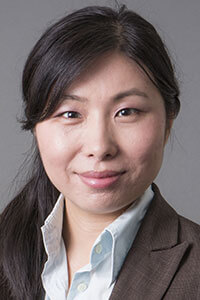
More research is needed on women and conferences, and whether they promote equity in the workplace, says the co-authors of one recent study.
Networking with peers, finding mentors, and learning new things are among the primary reasons women respondents to the Women’s Professional Conference Experience & Impact Study: Examining the Impact of Professional Conferences on Women’s Careers said they attend conferences. But motivations and rewards differ when women attend conferences designed for a female-only audience, compared with conferences designed for both men and women, the survey found.
More respondents attend women-only conferences looking to network and find mentors — 30 percent, compared to 25 percent at coed events. And while 32 percent of respondents reported receiving “industry/company recognition” as a reason to attend women-only events, only 21 percent attributed those rewards to coed conferences. More than 40 percent reported that they attend conferences — either coed and/or women-only events — for access to “new projects and opportunities.”

Emerald M. Archer (left) and Brady Hahn, co-authors of “Women’s Professional Conference Experience & Impact Study: Examining the Impact of Professional Conferences on Women’s Careers.”
Study co-author Brady Hahn, the founder of Brady Hahn Consulting & Insight Collective, teamed up with Emerald M. Archer, Ph.D., director, Center for the Advancement of Women at Mount Saint Mary’s University, to conduct the survey after she went looking for data about women and conferences in the context of equity in the workplace. Hahn and Emerald could find no survey data and only a handful — three, to be exact — of journal articles on the topic, Hahn said.
Research on women and conferences, and whether they promote equity in the workplace, is needed, the study’s co-authors wrote, given that professional conferences are a crucial source of networking, learning, and training opportunities in virtually every field. Conference speakers and panelists have historically been disproportionately male, while at the same time, the numbers of conferences organized for female audiences have grown. In general, the survey showed that while respondents valued both women-only and coed conferences, women’s conferences have a reputation for being focused on networking and soft skills, Hahn told Convene. Many women reported that, overall, they would prefer to take part in programs that included industry insights and work-related case studies, compared to sessions on topics such as work/life balance and empowerment.
The study also asked respondents how included they felt at conferences. African American, Latina, multiracial, and white women were more likely to feel equally included at both coed and women-only conferences, compared to Asian/Pacific Islander and Native American women, who felt more included at women-only conferences. Latinas were the demographic least likely to attend professional conferences compared to women in other race/ethnic categories — which, Hahn said, is hardly surprising, given their lack of representation as speakers.
The study also revealed that sexual harassment is a disturbingly common experience for female attendees. Almost half, 45 percent, reported they personally were sexually harassed or received unwanted advances at a professional conference, 86 percent of which said the harassment took place at a coed event. Two thirds of the women surveyed agreed that it was important for conference organizers to create a code of conduct for their events.
The survey also asked women about incentives that would make them more likely to attend conferences — 54 percent indicated that offering child-care would not make them more likely to attend. However, 81 percent favored stipends that would make attending conferences more economically feasible.
The survey respondents included 246 college-educated, professional women ages 18-65. More than half of the women — 55 percent — identified as white, 21 percent as Latina, 8 percent as Asian/ Pacific Islander, and 7 percent as African American, all located primarily in California. Almost half of the women surveyed (49 percent) work in the private sector, and nearly all respondents (94 percent) are seasoned attendees, visiting more than two conferences every year.
Because the sample is small and respondents came from existing email lists and opted into the survey, the findings are not generalizable to the larger population of American women. But the research is a first step, Hahn said, in understanding the experience women have at professional conferences and the impact they have on their lives.
The survey also offered insight into ways conference organizers can improve women’s experience of safety and inclusion, and better serve their professional interests. Among the authors’ recommendations for conference organizers:
- Establish an event-wide code of conduct that addresses standards in areas such as sexual harassment, diversity, and gender balance.
- Avoid gender-biased content silos and ensure women have equal access to diverse learning and development opportunities, including creating opportunities for younger women.
- Model inclusivity for all women by curating a diverse cross-section of speakers, with a particular focus on Latina and Native American voices.
Casey Gale is an associate editor at Convene.
JOIN THE CONVERSATION
Organizers interested in learning more can check out #TheConferenceStudy, and download slides from the study summary.
The Question of Child Care
Although more than half of the respondents to the Women’s Professional Conference Experience & Impact Study said that a child-care offering would not make them more inclined to attend a conference, some of that might be attributed to demographics: The respondents’ age group spanned 18–65, so for some of them, child care is not a concern. It’s difficult to chalk it up to just that, however, since around half (51 percent) were of child-bearing and child-rearing age (36-55).

Yan Liu
There are other audiences for whom on-site child care is a hot-button issue, as a recent Quartz at Work article — “Every Conference Should Offer Child Care” — highlights. As the article points out, “the trend for including child care in conferences is perhaps most obvious in the fields of science, technology, engineering, and math (STEM), maybe because those arenas know they already have low female participation and are trying to find creative fixes.”
Yan Liu, director of the University of Southern California Machine Learning Center, knows the difficulties of attending conferences as a mother of young children firsthand, according to the Quartz article. Now serving as chair of the organizing committee for KDD 2020, to be held Aug. 22–27 at the San Diego Convention Center, Liu is bringing back child-care facilities for the second time at the event.
The conference, organized by the Association for Computing Machinery, attracts 2,500 researchers and practitioners in data science, and introduced child care for the first time at its 2019 event. The child-care service took care of between 30 and 40 children at any one time, and 851 women attended, making up 28 percent of attendees — an increase of 5 percent in female attendance from the prior year.
Liu told Quartz that on-site child care can benefit both parents and their kids. At ICML 2019, a conference for machine learning in Los Angeles that Liu attended that offered child care, her six-year-old daughter returned at the end of the day saying she’d made friends — from Germany, France, China, and elsewhere. “Even though they don’t speak the same languages they were able to communicate … and she was able to make friends all over the world,” Liu said. It was “a serendipity that I didn’t expect.” — Michelle Russell
